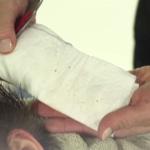In this article, we will walk you through and identify some common house small brown bugs and insects in your house, and some ways to get rid of them.
During summer, some common house bugs and insects usually stress you in your home with their presence. Most of these common house bugs, small brown bugs, and insects, carry diseases that may cause illness and damage.
If you like this post, you may be interested in our articles on: Why Are Tiny Black Bugs in House Near Window? What Are the Different Types of Household Pests That Exist Today? and Why Using a Grow Tent is the Best Choice for Your Needs.
Small Brown Bugs in Your House, Identity, and Habitat
There are many types of common house bugs and insects that are commonly seen in our homes, such as drugstore beetles, ticks, fruit flies, and many more. Since these bugs are known to cause harm and damage to your health, notifying them is a must to be able to not cause damage and pose health risks, so you can apply a method to get rid of them.
Through adequate and accurate identification of these bugs, you can get rid of these bugs or insects effectively and prevent them from coming back.
Drugstore Beetles
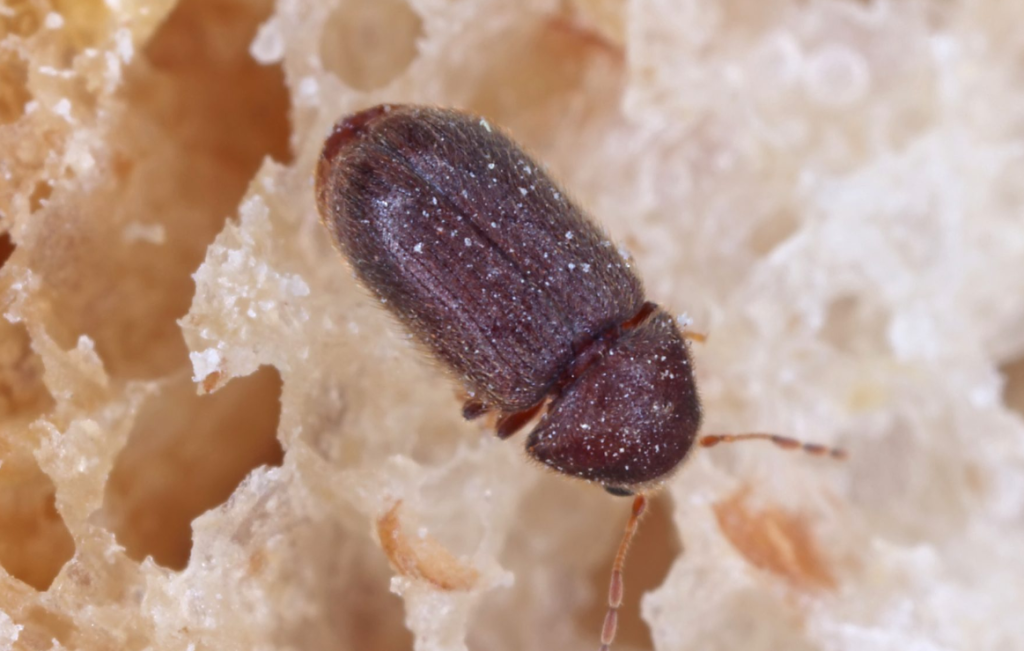
Drugstore beetles are wood borer bugs that often dwell inside stored goods such as cereals, cookies, bread, and other non-secured food products. They’re especially frequent in pantries and kitchens, where spills and crumbs abound.
They are popularly referred to as cigarette beetles because they resemble anobiid powder post beetles. They are also 1/16-1/4″ long, light brown in color, and oval in form.
Furthermore, when seen from above, they have a hood-like shield called the prothorax that encloses and conceals their heads.
Carpet Beetles
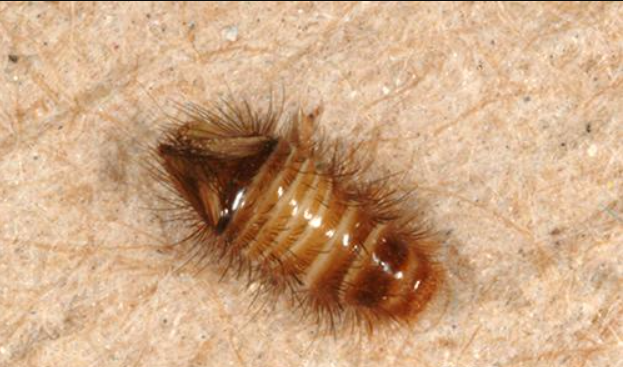
Carpet beetles are often found in carpets and at the margins of rugs. They may thrive on lint and detritus that accumulates behind baseboards and inside ducts and vents.
Adult carpet beetles are distinguished by their lustrous black to dark brown bodies and brownish legs. Their measurements vary from 1/8 inch to 3/16 inch.
Meanwhile, larvae may grow to be 5/16 of an inch long and range in color from light brown to black. They also have firm, smooth bodies with short, stiff hairs covering them.
Bed Bugs
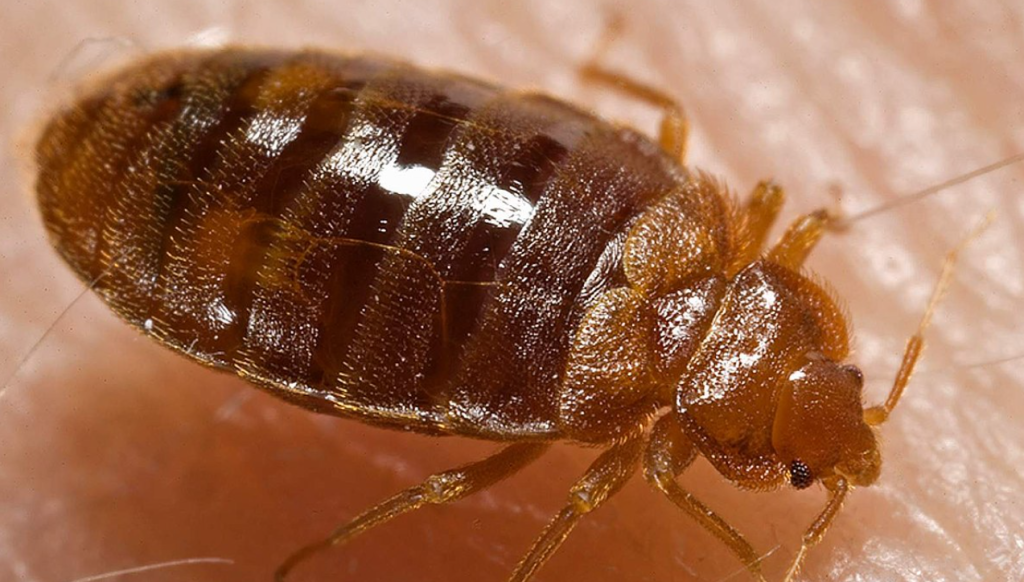
Bed bugs are little reddish-brown bugs about 0.2″ to 0.27″ (5–7 mm) in length. The little brown oval bugs like to hide in the cracks of bed frames, mattresses, headboards, and box springs. Bed bug bites may be identified by itching red spots on your neck, arms, face, and hands.
Adult bed bugs are difficult to detect because they are so small and only emerge at night. A musty-sweet odor, tiny black fecal stains, or minuscule blood smears on bedsheets are all symptoms of these “real bugs.” Furthermore, the blood-sucking brown house bugs aggregate in groups, making them simpler to locate.
A bed bug infestation is difficult to eradicate. Thus, prevention is the best method to keep brown bugs from becoming a major issue. Check any secondhand furniture you bring home and be cautious of hotel rooms to avoid bed bugs “hitching” a return trip in your bag.
Related: Why Are Tiny Black Bugs In House Near Window?
Silverfish
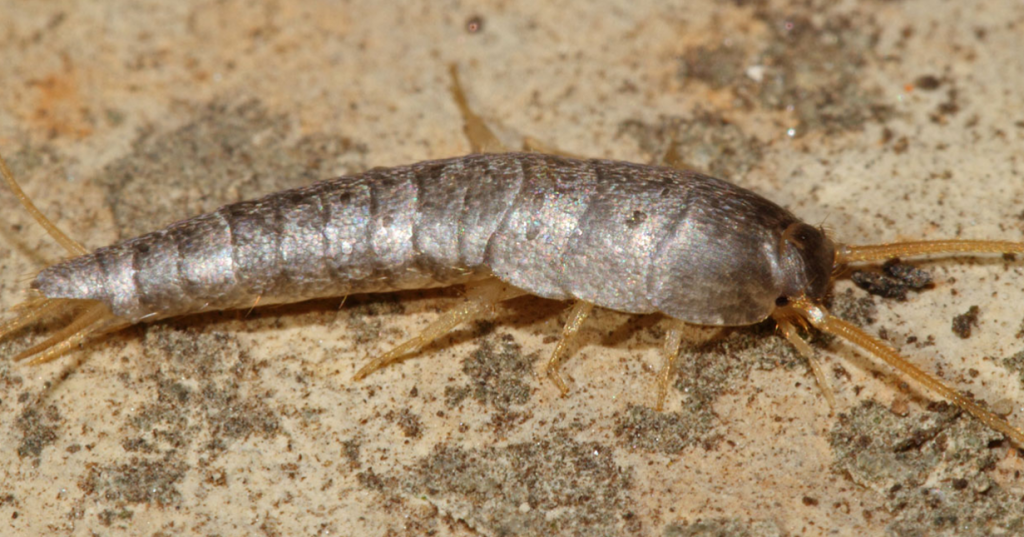
Silverfish like wet, dark environments with high humidity. They also like areas with a high concentration of starch-based objects, such as books and cartons. As a result, they are often found in attics, garages, basements, bathrooms, living rooms, and bedrooms.
Silverfish, as the name implies, are silver in color owing to the shimmering nature of their skin. Their true colors, however, are light grey and blue.
They have carrot-shaped bodies with three distinct tails on the back. In addition, they have two short antennae and no wings.
Weevils
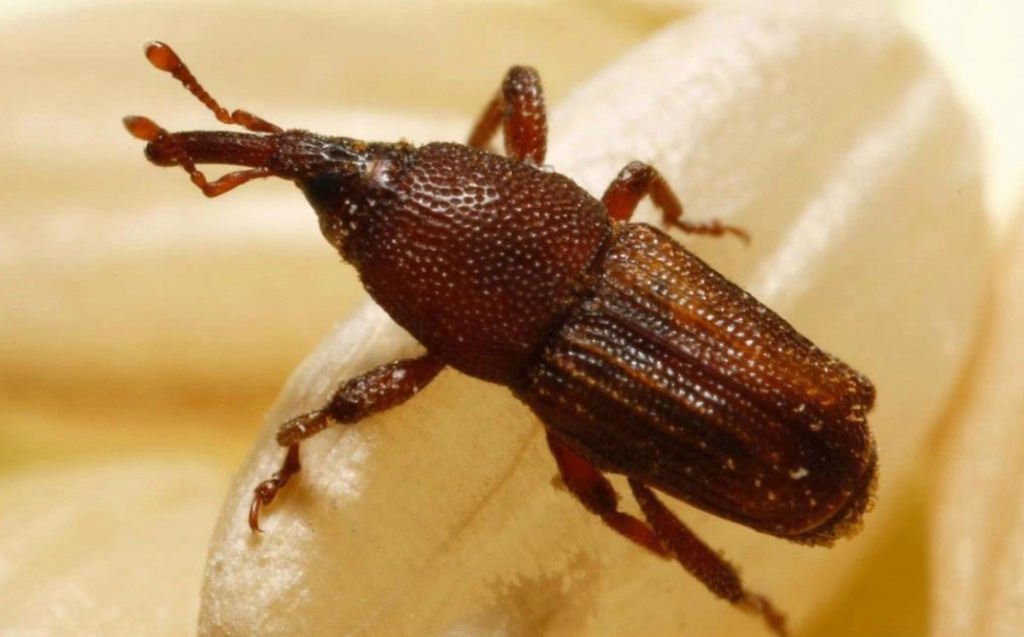
Weevils often graze on plants. However, if they get entry into your house through cracks and crevices, they will begin to infest it by contaminating stored meals with their excrement.
They often congregate around the windows. Certain weevil species, such as rice weevils, may be found in kitchens owing to the foods available, such as grains, beans, and nuts.
Weevils are distinguished from other little brown bugs by their exceptionally long, downward-curving snouts. They also have little, elbowed antennae that are 1/4 inch long.
Cockroaches
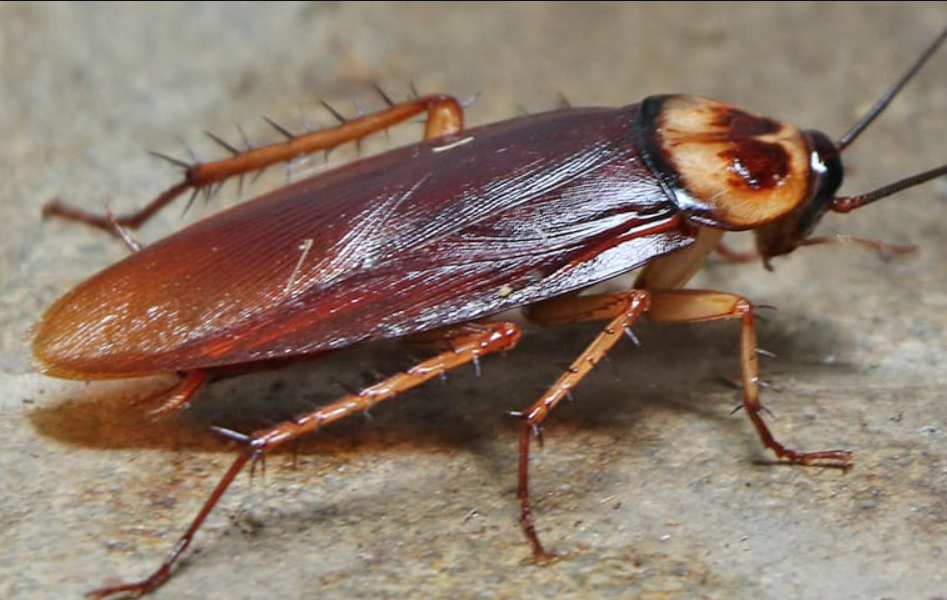
Cockroaches are pests that are known to spread a variety of illnesses through their excrement. They are mainly found in your home’s nooks and thin gaps, where they go unnoticed.
Because of the wetness in these spaces, you may also find these pests behind sinks, drawers, cabinets, and behind refrigerators. Because these pests are nocturnal, they hunt for food at night. They enjoy sugary, starchy meals, meats, and whatever crumbs they can get their hands on in the kitchen.
Their flattened oval bodies, bent downward heads, and extended antennae make them simple to identify. Their length may vary between 1.4 and 2 inches. They also feature gleaming brown or black leathery integuments.
Related: Call Pest Control: 5 Signs of a Tick Infestation
Ticks

Ticks are parasitic pests that lay eggs in many areas in your house, including windows, baseboards, drapes, and furniture. They have an oval body form with an abdomen and a cephalothorax.
They also have four legs and a “false head” that protrudes forward beyond their body. Ticks are about 3/16 of an inch long and do not have an antenna.
Female and male ticks are reddish-brown when unfed. The large, silver-colored region behind their heads distinguishes the female from the male.
Furthermore, female ticks may grow to be half an inch long after feeding, around the size of a grape.
Fruit Flies
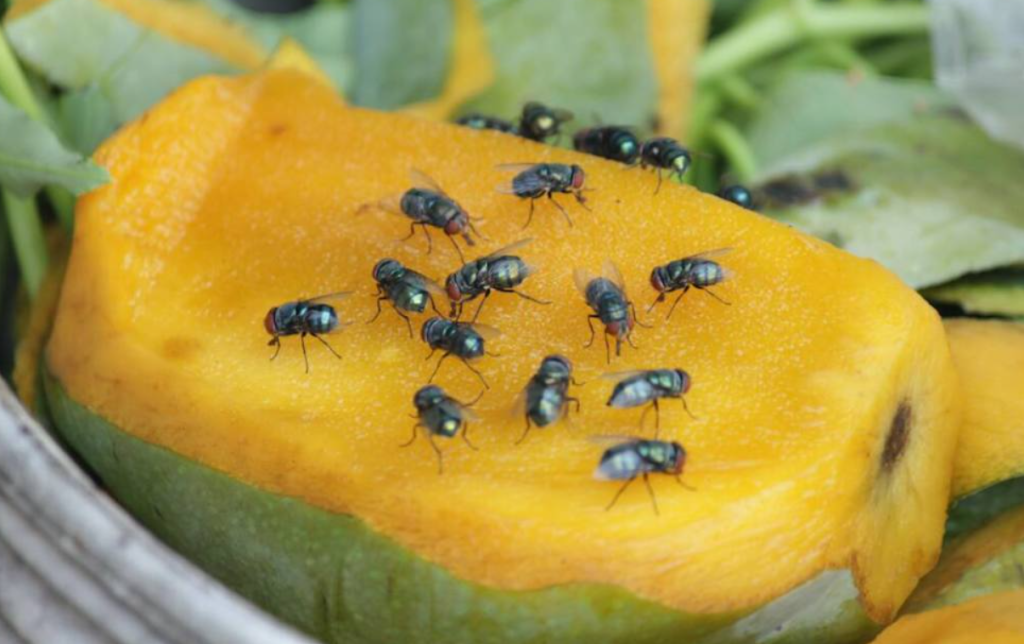
Fruit flies have been seen breeding in garbage cans, sewers, and empty drink bottles. They are particularly attracted to decaying vegetables and ripe fruits in the kitchen.
Their fluffy bristle antenna, thickened from the edges of their wings, and normally brilliant red eyes help to identify them. Their bodies are brown except for the back, which is black and may grow to be 1/8 inch long.
Why are there tiny brown bugs in your home?
If you see any little brown insect species in your home, such as drain flies, stinkbugs, or fruit flies, it indicates that something is attracting them. For example, if you notice fruit flies fluttering about, it might mean that you have ripening fruits in your kitchen or decaying meat and vegetables in your waste bins.
Furthermore, if you find drain flies hovering about your home, you may have stagnant water or leaky pipes.
How to Naturally Get Rid of Small Brown Bugs in Your Home
Eliminating little brown bugs may be a time-consuming task, particularly if you don’t know what species you’re dealing with. If you’re not up to the chore, you may hire a local pest control service provider to do it for you.
On other hand you can apply this natural product to be able to eliminate them:
- Neem Oil
- Peppermint Oil
- Diatomaceous Earth (DE)
- Pyrethrin
Conclusion
Small brown bugs aren’t a big issue if you take care of them straight away. If you’re presently experiencing bug issues, acting quickly may have a big impact.
You can get rid of insects by using the methods in this article or by calling a professional pest control company.




